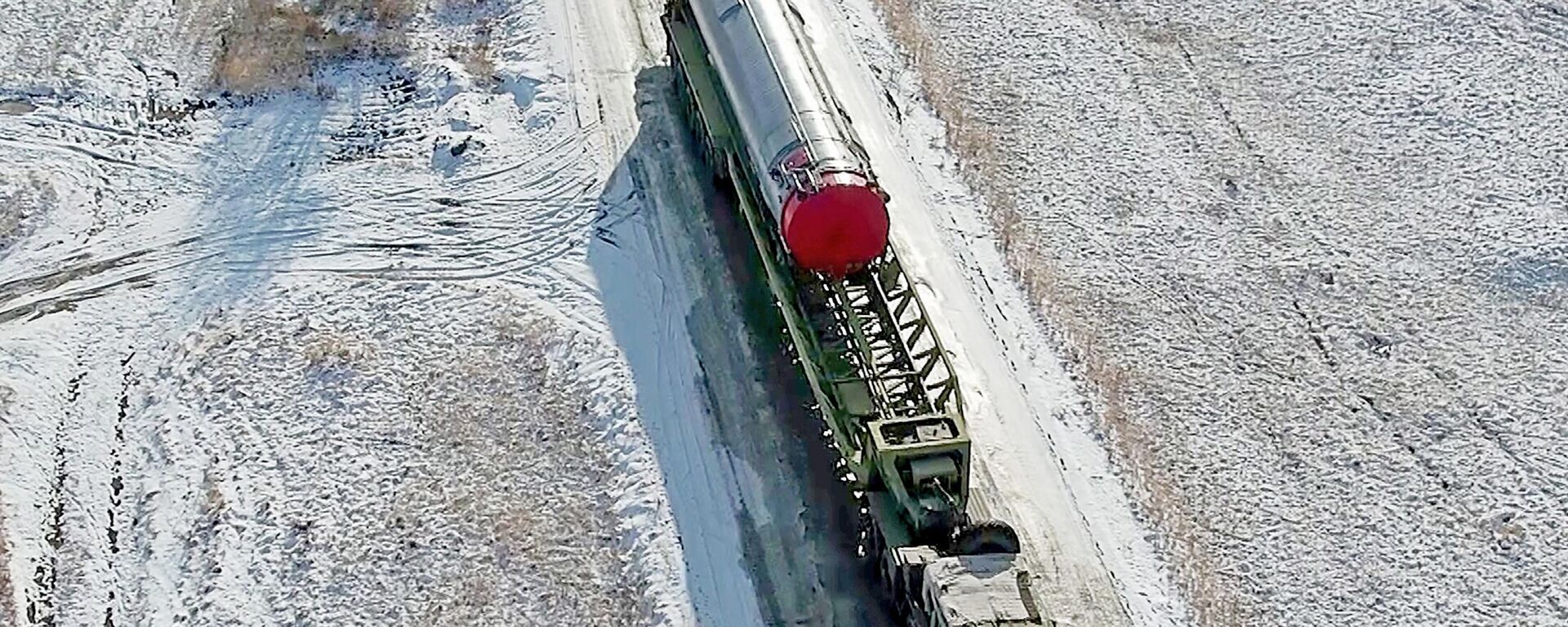https://sputnikglobe.com/20240503/us-and-japan-to-spend-3-billion-on-new-hypersonic-weapon-interceptor-1118238114.html
US and Japan to Spend $3 Billion on New Hypersonic Weapon Interceptor
US and Japan to Spend $3 Billion on New Hypersonic Weapon Interceptor
Sputnik International
US, Japan to Spend $3 Billion on New Hypersonic Weapon Interceptor
2024-05-03T07:59+0000
2024-05-03T07:59+0000
2024-05-03T07:59+0000
military
russia
us
china
hypersonic weapons
interceptor
https://cdn1.img.sputnikglobe.com/img/07e8/05/03/1118237766_0:0:2398:1350_1920x0_80_0_0_70002852b8a25568f861c10b1cd2a670.jpg
The US and Japan will allocate more than $3 billion to jointly develop a new type of missile capable of intercepting hypersonic weapons, Kyodo News has quoted an unnamed Pentagon source as saying.The Glide Phase Interceptor (GPI) project is expected to be completed by the 2030s, and Japan is expected to commit $1 billion to the project. The program was agreed upon by US President Joe Biden and Japanese Prime Minister Fumio Kishida in August 2023.The new missile will be designed to shoot down incoming hypersonic missiles during their most vulnerable glide phase of flight before re-entering the atmosphere from space.The Pentagon has previously said that in Japan, the GPI is likely to be installed on "the future ASEVs - Aegis System Equipped Vessels - of the Japan Maritime Self-Defense Force". Aegis is a US system designed to defend against short- and medium-range ballistic missiles.The GPI project comes as the US lags behind Russia and China in terms of developing hypersonic weapons, which include vehicles and missiles that travel faster than Mach 5, or five times the speed of sound.After the US began developing a series of new anti-ballistic missile interceptors following the termination of the ABM Treaty in 2002, Russia dusted off 1980s-era plans for hypersonic weapons designed to defeat traditional ballistic missile defense systems.China has also pioneered the development of several types of hypersonic weapons in line with its focus on long-range missiles as an asymmetric counter to the superior technology of the US military.The Anti-Ballistic Missile Treaty, signed by the US and the then-Soviet Union in 1972, collapsed in June 2002 when America unilaterally withdrew from the agreement.
https://sputnikglobe.com/20240418/is-the-us-mako-missile-truly-hypersonic-or-just-in-name-only-1117999852.html
https://sputnikglobe.com/20240313/avangard-hypersonic-glide-vehicle-putin-credits-with-nullifying-us-missile-defenses-1117300348.html
russia
china
Sputnik International
feedback@sputniknews.com
+74956456601
MIA „Rosiya Segodnya“
2024
Oleg Burunov
https://cdn1.img.sputnikglobe.com/img/07e4/09/0b/1080424846_0:0:2048:2048_100x100_80_0_0_3d7b461f8a98586fa3fe739930816aea.jpg
Oleg Burunov
https://cdn1.img.sputnikglobe.com/img/07e4/09/0b/1080424846_0:0:2048:2048_100x100_80_0_0_3d7b461f8a98586fa3fe739930816aea.jpg
News
en_EN
Sputnik International
feedback@sputniknews.com
+74956456601
MIA „Rosiya Segodnya“
Sputnik International
feedback@sputniknews.com
+74956456601
MIA „Rosiya Segodnya“
Oleg Burunov
https://cdn1.img.sputnikglobe.com/img/07e4/09/0b/1080424846_0:0:2048:2048_100x100_80_0_0_3d7b461f8a98586fa3fe739930816aea.jpg
development of hypersonic weapons, plans by the us and japan to allocate more than $3 billion to jointly develop a new type of missile capable of intercepting hypersonic weapons, glide phase interceptor project
development of hypersonic weapons, plans by the us and japan to allocate more than $3 billion to jointly develop a new type of missile capable of intercepting hypersonic weapons, glide phase interceptor project
US and Japan to Spend $3 Billion on New Hypersonic Weapon Interceptor
The new missile is being developed as the United States desperately tries to overtake Russia and China in the race for hypersonic weapons, but to no avail.
The US and Japan will allocate more than $3 billion to jointly develop a new type of missile capable of intercepting hypersonic weapons, Kyodo News has quoted an unnamed Pentagon source as saying.
The Glide Phase Interceptor (GPI) project is expected to be completed by the 2030s, and Japan is expected to commit $1 billion to the project. The program was agreed upon by US President Joe Biden and Japanese Prime Minister Fumio Kishida in August 2023.
The new missile will be designed to shoot down incoming
hypersonic missiles during their most vulnerable glide phase of flight before re-entering the atmosphere from space.
The Pentagon has previously said that in Japan, the GPI is likely to be installed on "the future ASEVs - Aegis System Equipped Vessels - of the Japan Maritime Self-Defense Force". Aegis is a US system designed to defend against short- and medium-range ballistic missiles.
"The development of a counter-hypersonic capability is a pressing need for both countries to address challenges in the Indo-Pacific region, including the emergence of offensive hypersonic and other sophisticated missile capabilities for potential acts of coercion," the Pentagon added.
The GPI project comes as the US lags behind Russia and China in terms of developing hypersonic weapons, which include vehicles and missiles that travel faster than Mach 5, or five times the speed of sound.
After the US began developing a series of new anti-ballistic missile interceptors following the termination of the
ABM Treaty in 2002, Russia dusted off 1980s-era plans for hypersonic weapons designed to defeat traditional ballistic missile defense systems.
The world's first hypersonic weapon, the Avangard, was unveiled to the world in 2018, and Russia has since unveiled two more: the Kinzhal hypersonic cruise missile and the Zircon surface- and submarine-launched missile.
China has also pioneered the development of several types of
hypersonic weapons in line with its focus on long-range missiles as an asymmetric counter to the superior technology of the US military.
The Anti-Ballistic Missile Treaty, signed by the US and the then-Soviet Union in 1972, collapsed in June 2002 when America unilaterally withdrew from the agreement.







